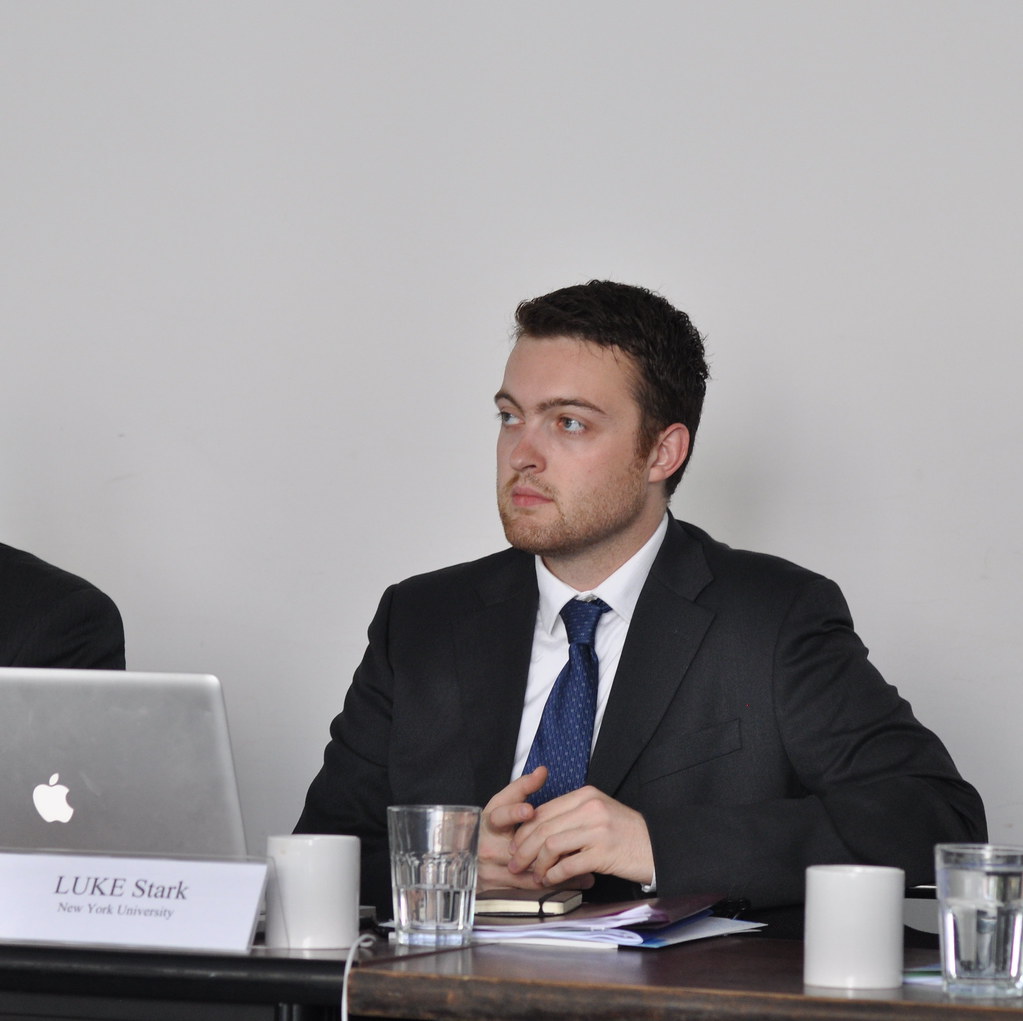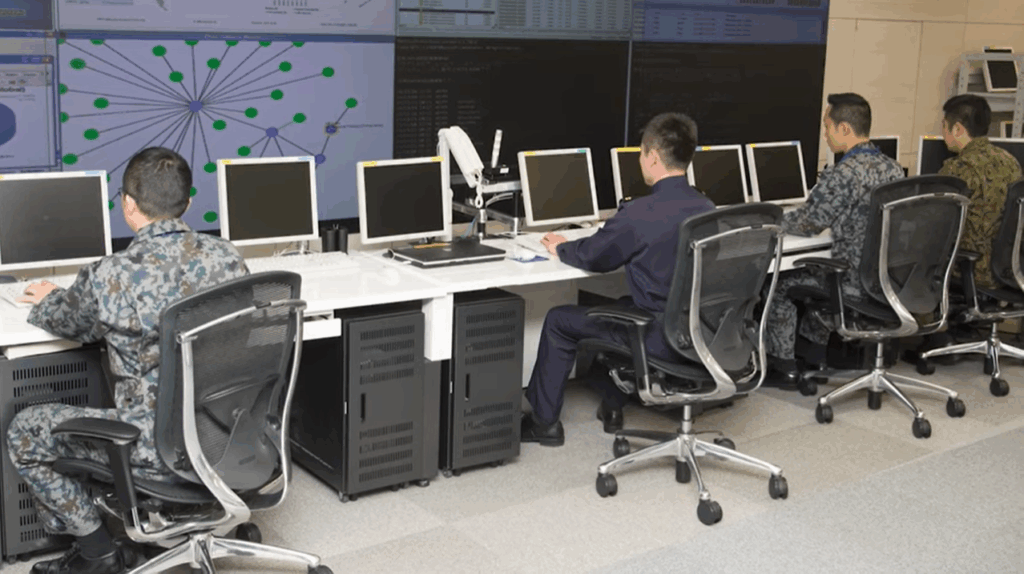
In recent years, the digital battlegrounds have expanded dramatically, revealing a landscape where nation-state actors relentlessly probe the defenses of critical infrastructure. What some lawmakers are now describing as “the worst telecom attack in the nation’s history” underscores a disturbing reality: even the most fortified institutions, like the Pentagon, remain vulnerable to sophisticated cyber espionage.
This landscape is defined by a series of high-stakes breaches that have not only stolen sensitive data but have also exposed systemic weaknesses within both government and private sector networks. From the insidious infiltration of telecommunications infrastructure targeting lawful wiretapping systems to the sprawling supply chain compromise of widely used software, these incidents highlight a persistent and evolving threat.
This in-depth analysis will meticulously dissect the methods employed by these determined adversaries, explore the profound vulnerabilities they exploited, and shed light on the initial efforts to understand and combat these complex cyberattacks. We will delve into the intricate code and the strategic oversights that allowed these hidden backdoors to be leveraged, revealing the precarious state of cybersecurity at the highest levels.

1. **The Pentagon’s Unsecured Telecom Lines**Recent congressional scrutiny has brought to light alarming vulnerabilities within the Department of Defense’s (DoD) telecommunications infrastructure. Senators Eric Schmitt (R-Mo.) and Ron Wyden (D-Ore.) have called for an investigation into the Pentagon’s failure to leverage its substantial purchasing power in the wireless telephone services market to demand more robust cybersecurity practices and accountability from carriers.
Their letter to DoD Inspector General Robert Storch directly criticized senior DoD leadership, stating that “The responsibility for such failures cannot and should not be pinned on low-level procurement officials, but rather, reflects a failure by senior DoD leadership to prioritize cybersecurity, and communications security in particular.” This criticism arises in the wake of Chinese government-backed hackers penetrating deep into U.S. telecommunications infrastructure, including major carriers like Verizon, AT&T, and Lumen Technologies.
The hackers exploited systems originally designed for lawful wiretapping, allowing government agencies court-ordered access to communications. Last month, the Federal Bureau of Investigation (FBI) and the Cybersecurity and Infrastructure Security Agency (CISA) confirmed that an “extensive amount of data” was stolen. This included records of “where, when and whom customers were communicating with, as well as the private communications of a small number of individuals primarily involved in government or political activities.”
Despite the DoD finalizing the Spiral 4 contract for unclassified wireless devices and services with a potential value of $2.67 billion, its own assessments confirmed significant cybersecurity weaknesses among its contracted carriers. While some encryption measures were implemented, the DoD acknowledged that certain surveillance threats, such as foreign governments tracking phone locations, can “only be mitigated by the wireless carriers.” This highlights a critical reliance on external entities for fundamental security.
The senators further criticized the DoD’s continued use of unencrypted landline phones and platforms like Microsoft Teams, which contributed to vulnerabilities. Ret. Rear Adm. David Simpson, former chief of the FCC’s Public Safety and Homeland Security Bureau, remarked that the letter was “spot on” in identifying “an area of great risk,” noting that “we failed to keep the lawful intercept platform and connections secure, we failed to anticipate how they might be exploited, and DoD made it worse by carrying forward all those vulnerabilities.”

2. **The SolarWinds Supply Chain Attack (SUNBURST)**The 2020 cyberattack, often referred to as the SolarWinds incident, stands as one of the most sophisticated supply chain compromises in history. This particular breach began with attackers gaining access to the build system of SolarWinds, a Texas-based provider of network monitoring software widely used across government and industry. This initial compromise provided the foundation for a much broader infiltration.
The attackers, leveraging a compromised Microsoft Office 365 account belonging to SolarWinds, established a foothold in the company’s software publishing infrastructure by September 2019. This allowed them to subtly modify software updates for SolarWinds’s Orion platform. The elegance of this attack lay in its ability to turn trusted software updates into malicious Trojan horses, delivered directly to unsuspecting customers.
In March 2020, the attackers began embedding remote access tool malware, dubbed SUNBURST, into legitimate Orion updates. These compromised updates were then distributed to SolarWinds’s customers, including vital U.S. government entities within the executive branch, military, and intelligence services. The attackers effectively used SolarWinds’s own distribution channels against its clients.
This supply chain methodology ensured that the malware reached thousands of organizations globally, cloaked in the guise of routine software maintenance. The sheer scale and stealth of this operation underscore its classification as “classic espionage,” as described by Thomas Rid in The Washington Post, executed “in a highly sophisticated way… But this is a stealthy operation.”
The incident revealed that prior to the attack, SolarWinds had displayed several security shortcomings, including not employing a chief information security officer and advising customers to disable antivirus tools before installing its software. These systemic weaknesses within the vendor made it a prime target for such a sophisticated supply chain compromise, allowing the attackers to establish a deep and prolonged presence.

3. **Advanced Persistent Threat: SUNBURST Malware Mechanics**The SUNBURST malware was meticulously designed for stealth and persistence, making it an advanced persistent threat. Once a user installed a trojaned Orion update, the malware payload would execute but remain dormant for a period of 12 to 14 days, a tactic likely employed to evade immediate detection by security systems.
After its dormancy period, the malware would attempt to communicate with one or more pre-configured command-and-control (C2) servers. These communications were deliberately crafted to mimic legitimate SolarWinds network traffic, further obscuring their malicious nature and allowing them to blend in with normal network activity. This sophisticated camouflage was a key factor in the attack’s prolonged undetected presence.
A successful connection to a C2 server served as an alert to the attackers, signaling a successful malware deployment. Crucially, this communication established a covert back door into the victim’s network, which the attackers could then choose to exploit further if the target was deemed high-value. The malware began contacting C2 servers in April 2020, originating from various continents.
However, the attackers were highly selective in their exploitation. They reportedly utilized only a small fraction of the successful malware deployments, focusing specifically on computer networks belonging to high-value targets. Once inside these coveted networks, they pivoted, installing additional exploitation tools like Cobalt Strike components to deepen their access and expand their reach.
This strategic approach allowed them to move laterally within victim networks, gather intelligence, and prepare for data exfiltration. The use of U.S.-based C2 IP addresses on commercial cloud services further enabled them to evade detection by national cybersecurity systems like Einstein, operated by the Department of Homeland Security, highlighting the sophisticated evasion techniques employed.

4. **Microsoft Exploits: A Multifaceted Entry Point**The extensive cyber campaigns also capitalized on multiple vulnerabilities within Microsoft products, services, and its vast software distribution infrastructure, demonstrating a multifaceted approach by the attackers. These exploits provided additional, distinct pathways into target networks, often complementing or even preceding the SolarWinds compromise.
One significant vector was another supply chain attack, where at least one reseller of Microsoft cloud services was compromised. This gave the attackers direct access to the Microsoft cloud services utilized by the reseller’s customers, effectively bypassing direct defenses and leveraging the trust inherent in third-party vendor relationships. This illustrates the cascading risk within complex digital ecosystems.
Furthermore, a critical vulnerability known as “Zerologon,” affecting the Microsoft authentication protocol NetLogon, played a pivotal role. This flaw allowed attackers to gain access to all valid usernames and passwords within any breached Microsoft network. With these credentials, they could assume the privileges of any legitimate user, facilitating widespread compromise, including access to Microsoft Office 365 email accounts.
Compounding these issues, a flaw in Microsoft’s Outlook Web App may have enabled attackers to bypass multi-factor authentication, a cornerstone of modern cybersecurity defenses. By tricking Microsoft’s authentication systems, potentially using counterfeit identity tokens, the attackers could monitor sensitive emails belonging to staff at entities like the NTIA and Treasury for several months. The presence of single sign-on infrastructure further increased the viability of this attack vector.
Sami Ruohonen of F-Secure succinctly captured the gravity of these Microsoft exploits, noting that if an attacker could access “data that is only available to the CEO, or data that is only available to IT services, [the attacker would get] all of this data.” This highlights the profound implications of compromising core authentication and communication platforms within an organization.
5. **VMware Vulnerabilities: Exploiting Persistence**Beyond the headline-grabbing SolarWinds and Microsoft breaches, Russian state-sponsored attackers also leveraged vulnerabilities in VMware products to further their objectives. Specifically, flaws in VMware Access and VMware Identity Manager were utilized to pivot within compromised networks and establish persistent access, ensuring long-term presence even after initial entry points might have been addressed.
These vulnerabilities, while not necessarily initial compromise vectors, were critical for lateral movement and maintaining control once inside a network. They allowed existing network intruders to deepen their foothold, access additional resources, and solidify their operational capabilities within the target infrastructure, making their eviction significantly more challenging.
The National Security Agency (NSA) played a crucial role in bringing these specific threats to light. Sometime before December 3, 2020, the NSA discovered these vulnerabilities and promptly notified VMware. This led to VMware releasing patches on December 3, 2020, in a rapid response to mitigate the identified risks.
Crucially, the NSA followed up on December 7, 2020, by publishing an advisory that warned customers to immediately apply these patches. The advisory explicitly stated that the vulnerabilities were being “actively exploited by Russian state-sponsored attackers,” underscoring the urgency and the direct involvement of sophisticated adversaries.
While it was definitively known that the SUNBURST trojan could have provided the necessary access to exploit these VMware bugs, as of December 18, 2020, investigators were still determining whether attackers had specifically chained these two exploits together in the wild. Nevertheless, their active exploitation highlights the comprehensive toolkit and opportunistic nature of the attackers.

6. **The Shadowy Perpetrators: Attributing the Attacks**Attributing sophisticated cyberattacks to specific entities is a complex and often contentious process, yet investigators and U.S. government officials have coalesced around strong suspicions regarding the identity of the perpetrators behind these extensive breaches. The consensus points overwhelmingly to state-sponsored groups linked to the Russian government.
SolarWinds itself stated its belief that the malware insertion into Orion was performed by a foreign nation. U.S. officials, including Secretary of State Mike Pompeo, who said Russia was “pretty clearly” responsible, have publicly attributed responsibility. FireEye’s CEO also stated that Russia was the “most likely culprit” and that the attacks were “very consistent” with Russia’s Foreign Intelligence Service (SVR).
The specific groups implicated include the SVR (Russia’s Foreign Intelligence Service) and Cozy Bear, also known as APT29. These entities have been tracked by cybersecurity firms under placeholder names such as “UNC2452” by FireEye and “Dark Halo” by incident response firm Volexity, indicating distinct but potentially related operational characteristics.
Furthermore, CISA and the FBI, on October 22, 2020, identified the Microsoft Zerologon attacker as “Berserk Bear,” another state-sponsored group believed to be part of Russia’s Federal Security Service (FSB). This suggests that multiple Russian-backed groups may have been involved across the various attack vectors, either independently or in a coordinated fashion.
Adding another layer to attribution, cybersecurity firm Kaspersky noted that the SUNBURST malware exhibited similarities to “Kazuar,” malware believed to have been created by “Turla,” a group linked by Estonian intelligence to the Russian FSB. These connections underscore a long-standing pattern of sophisticated cyber espionage originating from Russian state-backed actors.

7. **The Discovery: FireEye’s Crucial Role**The unmasking of the sprawling SolarWinds supply chain attack owes much to the cybersecurity firm FireEye, which inadvertently stumbled upon the breach while investigating an incident targeting its own systems. This sequence of events highlights the interconnectedness of cyber defense and the critical role of private security researchers.
On December 8, 2020, FireEye publicly announced that its “red team tools”—sophisticated offensive cybersecurity tools used to test client defenses—had been stolen. The firm immediately suspected a state-sponsored attacker, widely believed to be the SVR, Russia’s Foreign Intelligence Service, which had also been identified as a target of the SVR.
It was in the course of this internal investigation into its own breach and tool theft that FireEye made a pivotal discovery: the SolarWinds supply chain attack. This revelation turned a corporate incident into a national security crisis, showcasing FireEye’s dedication to transparency and its crucial role in alerting the broader security community.
Following its discovery, FireEye promptly reported the attack to the U.S. National Security Agency (NSA), the federal agency responsible for defending the nation from cyberattacks. It is important to note that the NSA was not known to have been aware of the attack prior to FireEye’s notification, underscoring the gap that private sector intelligence often fills.
Days later, on December 13, public confirmations emerged regarding breaches at the U.S. Treasury and Department of Commerce, with sources explicitly linking these incidents to the FireEye breach. By December 15, FireEye confirmed that the vector used to attack these government departments was precisely the same: a trojaned software update for SolarWinds Orion. This led to the security community swiftly shifting its attention to Orion, identifying infected versions and naming the malware SUNBURST, with Microsoft calling it Solorigate, and the tool used to insert it, SUNSPOT, further detailing the precise mechanisms of compromise.
The preceding section illuminated the complex methodologies and initial vulnerabilities exploited by sophisticated adversaries in their relentless targeting of U.S. government and private sector networks. We delved into the intricacies of supply chain compromises, specific software vulnerabilities, and the meticulous process of attributing these high-stakes cyberattacks to state-sponsored entities. However, understanding the ‘how’ and ‘who’ is only one part of this unfolding narrative; the true gravity of these intrusions becomes clear when examining their far-reaching consequences and the systemic issues they exposed.
As we move forward, this section will rigorously analyze the extensive data exfiltration that transpired, detailing the breadth of federal and private entities impacted and the sensitive nature of the information compromised. Furthermore, we will scrutinize the profound long-term strategic implications of these breaches, evaluating how they could reshape geopolitical dynamics and national security postures for years to come. Finally, we will assess the immediate governmental and legislative responses, alongside a critical examination of the underlying systemic failures within the Department of Defense’s cybersecurity framework, offering a comprehensive view of the fallout and the arduous path to recovery.

8. **Extensive Data Exfiltration: The Scope of Compromise**The scale of data exfiltration following these sophisticated cyberattacks was nothing short of staggering, impacting an estimated 18,000 government and private users who downloaded compromised versions of the SolarWinds Orion software alone. This initial breach immediately triggered alarms regarding the potential for wider intrusions, as government sources acknowledged that it was “a much bigger story than one single agency,” representing “a huge cyber espionage campaign targeting the U.S. government and its interests.” The concern quickly escalated into a frantic scramble to identify the full extent of the compromise across the nation’s digital infrastructure.
Among the federal government entities confirmed to have suffered breaches were critical agencies such as the Centers for Disease Control and Prevention, the Department of Justice, and the Department of Energy, which includes the National Nuclear Security Administration. The National Institutes of Health, the Cybersecurity and Infrastructure Security Agency (CISA), the Department of State, and the Department of the Treasury were also directly affected. This extensive list also encompassed the Department of Agriculture’s National Finance Center, the Federal Aviation Administration under the Department of Transportation, and even the Judicial Branch, with the Administrative Office of the United States Courts reporting access to case management files, including sealed documents.
Beyond the federal domain, the attacks permeated state and local governments, with confirmed breaches in Arizona’s Pima County, the California Department of State Hospitals, and the City of Austin, Texas. Kent State University in Ohio also appeared on the list of affected entities. The private sector, too, bore the brunt of this widespread campaign, with organizations like Belkin, Cisco Systems, Cox Communications, Equifax, Malwarebytes, Nvidia, Palo Alto Networks, and Qualys acknowledging compromises. Notably, Microsoft itself experienced product source code access and reseller account breaches, while Mimecast reported the compromise of a cryptographic certificate and Office 365 email accounts.
FireEye, the firm that initially uncovered the SolarWinds attack, had its own red team tools stolen, highlighting the audacity and breadth of the adversary’s operations. The attackers also gained access to SolarWinds’s Microsoft Office 365 email and build systems, further cementing their deep penetration into the digital supply chain. The sheer volume and diversity of targets underscore a meticulously planned and executed campaign aimed at maximizing intelligence collection and strategic advantage across virtually every critical sector.

9. **Unraveling the Theft: What Was Stolen and How**The stolen data was diverse and highly sensitive, reflecting a comprehensive intelligence-gathering operation. From telecommunications carriers, hackers exfiltrated “an extensive amount of data,” including critical records of “where, when and whom customers were communicating with,” alongside the “private communications of a small number of individuals primarily involved in government or political activities.” This deep insight into communication patterns and content provides adversaries with an unparalleled strategic advantage, allowing them to map relationships and uncover vulnerabilities.
Within compromised networks, especially those infiltrated via SolarWinds and Microsoft exploits, the attackers accessed emails and other confidential documents. Their methodology involved a sophisticated hunt for certificates that would allow them to sign Security Assertion Markup Language (SAML) tokens. This capability enabled them to masquerade as legitimate users, gaining access to additional on-premises services and crucial cloud services like Microsoft Azure Active Directory. Such access facilitated federated authentication across victim resources via single sign-on infrastructure, essentially giving them keys to vast swathes of digital information.
The investigations into what exactly was stolen and how proved immensely challenging. Attackers often removed or altered evidence, complicating forensic efforts and making it difficult to fully ascertain the scope of compromise. Organizations were forced to maintain separate, secure networks, operating under the assumption that their main systems were compromised, further disrupting operations. Compounding these difficulties was the fact that SolarWinds Orion, itself a network monitoring tool, became unusable, leaving organizations with reduced visibility into their own networks at a critical time.
A particularly alarming aspect was the breach of the Treasury Department’s unclassified but highly sensitive email systems, which were accessed through a manipulation of software keys. This system is vital for decisions that influence financial markets, economic sanctions, and interactions with the Federal Reserve, meaning the compromise granted adversaries insights into crucial economic intelligence. Commentators, including cyberconflict professor Thomas Rid, emphasized the immense volume of stolen data, suggesting it was “many times greater than during Moonlight Maze” and, if printed, would form a stack “far taller than the Washington Monument.” This vast intelligence trove represents a significant strategic asset for the perpetrators.

10. **Long-Term Strategic Impact: Years of Adversary Advantage**The ramifications of these extensive cyber intrusions extend far beyond the immediate damage and data theft, promising to grant the perpetrators significant influence and intelligence advantages for years to come. U.S. officials, still investigating the full extent of the stolen information, grappled with determining how this trove could be leveraged in future operations. The consensus among experts was that this intelligence would fundamentally shift the strategic landscape, providing adversaries with persistent leverage in geopolitical conflicts and espionage.
Possible future uses for the exfiltrated data are deeply concerning, ranging from direct attacks on hard targets like the CIA and NSA, to the more insidious tactic of using blackmail to recruit spies within U.S. government and critical infrastructure. The sheer volume and sensitivity of the information mean that adversaries could gain an unprecedented understanding of U.S. capabilities, weaknesses, and operational methodologies. This level of insight allows for more precise and effective targeting in future cyber campaigns, potentially undermining national security for an extended period.
Professor Thomas Rid aptly noted that the stolen data would have “myriad uses,” suggesting a vast spectrum of applications for intelligence, influence, and disruption. This prolonged access and data exfiltration underscore a critical, long-term strategic setback for the United States. Former Homeland Security Advisor Thomas P. Bossert warned that it could take years to fully evict the attackers from U.S. networks, leaving them with the ongoing capability to monitor, destroy, or tamper with data during this extended recovery period.
The incident highlights the profound implications of compromising core authentication and communication platforms within an organization, leading to a precarious state of cybersecurity at the highest levels of government and industry. The ability of an attacker to access “data that is only available to the CEO, or data that is only available to IT services” signifies a complete compromise of an organization’s most sensitive information. This deep and prolonged access ensures that the perpetrators will continue to exploit their strategic advantage, making the recovery and re-securing of these networks a generational challenge that demands sustained vigilance and substantial investment.

11. **Immediate Responses and Recovery Efforts: A Nation Scrambles**Upon the public acknowledgement of the breaches, a rapid, albeit initially fragmented, response unfolded across government agencies and the private sector. CISA, recognizing the immediate threat, issued an emergency directive on December 13, 2020, instructing federal agencies to disable the compromised SolarWinds software. This drastic measure, while crucial for mitigating further intrusions, ironically reduced agencies’ ability to monitor their own computer networks, creating a temporary blind spot in the nation’s digital defenses.
Technology companies played a pivotal role in the immediate containment efforts. GoDaddy, for instance, handed over ownership of a command-and-control domain used in the attack to Microsoft, enabling the tech giant to activate a killswitch in the SUNBURST malware and identify infected SolarWinds customers. Microsoft also moved quickly to integrate SUNBURST into its malware database, ensuring that its Defender antivirus solution would detect and quarantine the threat from December 16 onwards. FireEye, after its own tools were stolen, promptly published countermeasures to help organizations defend against the newly exposed offensive capabilities.
The recovery process proved to be profoundly complex and resource-intensive. CISA advised affected organizations to rebuild compromised devices from trusted sources, emphasizing that all credentials exposed to SolarWinds software should be considered compromised and immediately reset. Anti-malware companies concurrently issued guidance, recommending thorough searches of log files for specific indicators of compromise. However, these efforts were complicated by the attackers’ deliberate actions, as they had often deleted or altered records, and may have modified network or system settings in ways that required meticulous manual review.
The severity of the situation even led to discussions about fundamental architectural changes. Harvard’s Bruce Schneier and NYU’s Pano Yannakogeorgos suggested that affected networks might need to be replaced completely to ensure full eradication of the persistent threat. Meanwhile, the Department of Energy allocated resources to assist the Federal Energy Regulatory Commission (FERC) in its recovery, compensating for staffing shortfalls at CISA. These immediate, multifaceted responses highlighted the urgent need for collaborative action and a shared understanding of the unprecedented challenge at hand.

12. **Legislative and Governmental Scrutiny: Calls for Accountability**The revelations of widespread cyberattacks quickly ignited a firestorm of legislative and governmental scrutiny, with officials demanding accountability and proposing sweeping reforms. The Senate Armed Services Committee’s cybersecurity subcommittee received briefings from Defense Department officials, while the House Committee on Homeland Security and the House Committee on Oversight and Reform launched formal investigations into the breaches, signaling a bipartisan concern for national security.
Senator Ron Wyden emerged as a vocal proponent for systemic change, calling for mandatory security reviews of all software utilized by federal agencies, a critical step toward proactively identifying vulnerabilities. Politically, the attacks became a point of contention, particularly concerning President Donald Trump’s delayed public acknowledgment and his suggestion, without evidence, that China rather than Russia might be responsible. This stance directly contradicted the assessments of top U.S. officials, including Secretary of State Mike Pompeo, who stated Russia was “pretty clearly” responsible, and Attorney General William Barr, who concurred.
Prominent Republican and Democratic senators, including Marco Rubio and Mark Warner, also publicly attributed the attacks to Russia, with Rubio describing it as “the gravest cyber intrusion in our history” and Warner noting that “all indications point to Russia.” FBI Director Christopher Wray later attributed the attack specifically to Russia’s SVR. This unified front from intelligence agencies and key congressional leaders underscored the consensus on attribution, despite initial executive branch dissent.
Beyond attribution, lawmakers also zeroed in on the Department of Defense’s internal failures. Senators Eric Schmitt and Ron Wyden sent a sharply worded letter to DoD Inspector General Robert Storch, urging an investigation into the Pentagon’s failure to leverage its purchasing power to demand better cybersecurity from wireless carriers. They further recommended renegotiating contracts to include stricter security requirements and mandating the sharing of third-party cybersecurity audits, highlighting a legislative push for proactive measures and increased vendor accountability in the face of persistent threats.
Read more about: United States Immigration and Customs Enforcement: An Overview of Mission, Structure, and Evolution

13. **Systemic Failures in DoD Cybersecurity: A Deep-Seated Problem**The cyberattacks laid bare a critical and deeply entrenched problem within the Department of Defense’s cybersecurity posture, particularly regarding its telecommunications infrastructure. Despite being one of the largest purchasers of wireless telephone services, the Pentagon failed to use its substantial market leverage to compel its carriers—including major players like Verizon, AT&T, and T-Mobile—to adopt more robust cybersecurity practices. This oversight, as highlighted by Senators Schmitt and Wyden, reflected a systemic “failure by senior DoD leadership to prioritize cybersecurity, and communications security in particular.”
DoD’s own assessments confirmed significant cybersecurity weaknesses among its contracted carriers. While some encryption measures were belatedly implemented, the department conceded that certain surveillance threats, such as foreign governments tracking phone locations, could “only be mitigated by the wireless carriers.” This reliance on external entities for fundamental security, without enforcing stringent requirements, created a critical vulnerability that foreign adversaries, specifically Chinese government-backed hackers, were quick to exploit through lawful wiretapping systems.
Adding to these concerns was the Pentagon’s continued reliance on unencrypted landline phones and platforms like Microsoft Teams, which contributed to an expanded attack surface. Ret. Rear Adm. David Simpson, former chief of the FCC’s Public Safety and Homeland Security Bureau, critically assessed this situation, stating that “we failed to keep the lawful intercept platform and connections secure, we failed to anticipate how they might be exploited, and DoD made it worse by carrying forward all those vulnerabilities.” He further pointed out the deep technological debt and underfunding in the DoD’s wireless and wired telephony areas.
Simpson’s analysis suggested that while the DoD focused on “high-level architecture and science and technology goals,” these efforts had not translated into practical improvements in its fundamental telephony infrastructure. He described the “big C4I plan” as “not fit for purpose,” indicating a disconnect between strategic vision and operational reality. This systemic neglect, coupled with record expenditures on other DoD items, makes addressing these gaps effectively in the future a significant challenge, underscoring the need for sustained leadership pressure to hold the department accountable.

14. **Industry and Private Sector Responses: Lessons Learned and Future Defenses**The extensive cyberattacks served as a harsh wake-up call for the technology industry and the private sector, prompting a reevaluation of security practices and supply chain vulnerabilities. Beyond immediate containment, many companies began to implement long-term strategic adjustments. SolarWinds, for instance, responded by unpublishing its featured customer list, though initially faced criticism for not immediately removing infected software updates from its distribution server. The company subsequently hired a new cybersecurity firm, co-founded by industry expert Brian Krebs, to bolster its defenses and restore trust.
The incident spurred significant legal and ethical discussions. SolarWinds investors filed a class-action lawsuit against the company, citing security failures and a subsequent fall in share price, underscoring the financial and reputational risks associated with such breaches. More broadly, the Linux Foundation weighed in, arguing that if Orion had been open-source software, its users would have been able to audit the code, including via reproducible builds, making it “much more likely that the malware payload would have been spotted” earlier. This argument ignited debates about the benefits of transparency in software development for critical infrastructure.
Beyond individual company responses, the attacks initiated a broader industry dialogue on supply chain security and the collective responsibility to protect digital ecosystems. A senior CISA official acknowledged the “Salt Typhoon campaign should spur some ‘hard thinking long term on what this means and how we’re going to secure our networks.'” This introspection emphasized the necessity of a collaborative approach between government agencies and telecommunications partners to strengthen network defenses holistically.
The events of 2020 and beyond have fundamentally reshaped the cybersecurity landscape, forcing both public and private sectors to confront the pervasive nature of advanced persistent threats. The lessons learned from these exploits — from the critical importance of robust vendor security practices to the need for continuous vigilance against novel attack vectors — are now being integrated into future defense strategies. This collective experience is driving a renewed commitment to investing in resilient infrastructure, fostering greater information sharing, and building more adaptive security postures capable of anticipating and neutralizing the evolving tactics of sophisticated adversaries.
The meticulous unraveling of these sophisticated cyberattacks, from their initial penetration points to their profound, lingering impact, paints a stark picture of the perpetual digital war being waged against critical infrastructure. What began as a hacker’s oversight, a seemingly hidden backdoor into a government supercomputer within the Pentagon network, ultimately revealed a landscape riddled with systemic vulnerabilities and exposed the sheer determination and ingenuity of nation-state adversaries. The concerted efforts of federal agencies, private cybersecurity firms, and legislative bodies continue to address not just the immediate threats but also the deeply embedded failures in a defense posture that must now evolve at an unprecedented pace. This ongoing struggle for digital sovereignty demands not only cutting-edge technology but also a fundamental reorientation towards proactive defense, shared intelligence, and an unwavering commitment to securing the very foundations of our interconnected world, ensuring that the lessons of these breaches forge a stronger, more resilient digital future.





